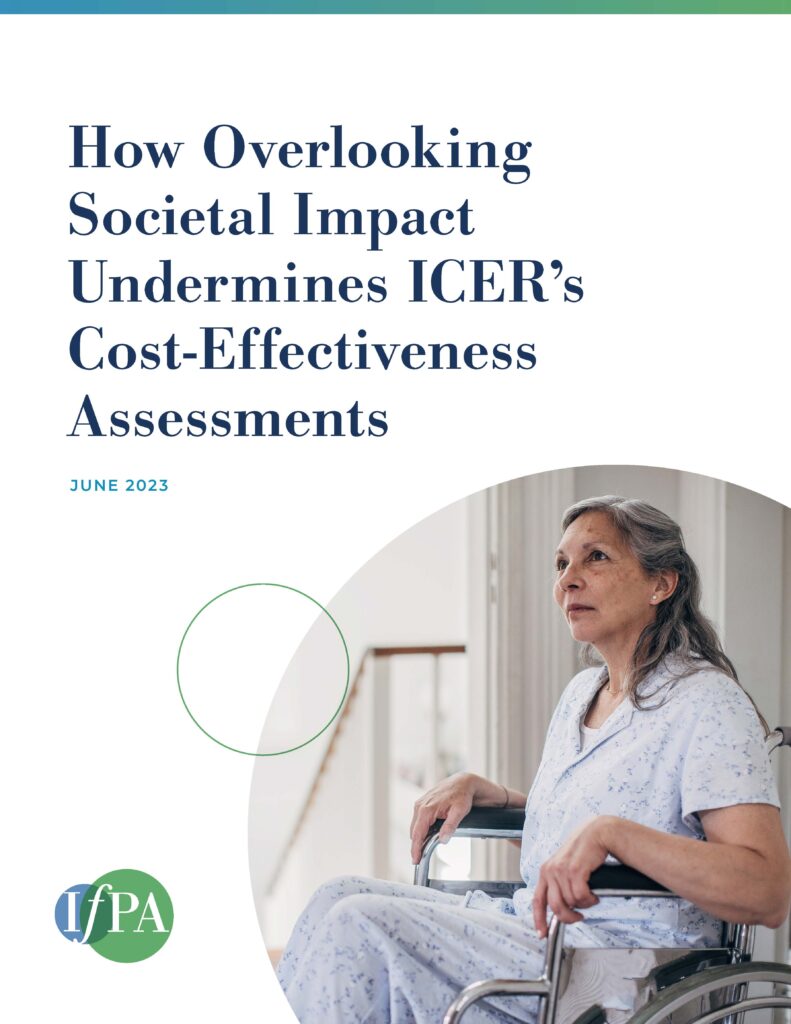What are new drugs worth?
The question is complex. And it’s one that the Centers for Medicare and Medicaid Services (CMS) may attempt to answer as it determines drug prices under the Inflation Reduction Act.
But one thing is certain. The value of a medication includes its benefits to society, including patients and caregivers, not just to health plans or the health care system.
These benefits don’t always come into play, however, when economists assess a new drug or device’s value. So explains a new report from the Institute for Patient Access.
The report explores how a prominent health technology assessment organization, the Institute for Clinical and Economic Review (ICER), often fails to consider societal factors – despite acknowledging that they’re critical to fully capturing a new drug’s value. The oversight is concerning, as the organization’s assessments have been suggested as a potential resource for CMS as it makes determinations of drug prices in Medicare under the Inflation Reduction Act.
Medications’ Societal Impact
In addition to improving the health of individual patients, new medications and medical devices can also benefit society more broadly.
As the paper explains, innovative drugs can:
- Alleviate family member and caregiver burdens
- Save on insurance expenses
- Reduce health inequities
- Reduce workplace absenteeism
Given these benefits, ICER incorporated societal perspective into the 2020-2023 iteration of its value assessment framework. Despite setting clear guidelines about when to consider societal perspective, however, ICER has largely omitted it in assessments since then.
When ICER Ignores the Societal Perspective
As the paper notes, ICER has inconsistently applied the societal perspective in 29 new drug assessments between 2020 and 2022.
In 2020, for example, only 18% of assessments included the societal perspective. In 2021, that number dipped to 10%.
Omitting the societal perspective isn’t just problematic. It’s contradictory. ICER overlooks the societal perspective even when its own criteria demand otherwise. As a result, the organization underestimates the full value of new medications while also breaking its commitment to stakeholders.
For example:
- Assessments of outpatient treatments for COVID-19 disregarded the societal perspective, despite the ICER’s economists acknowledging that “the societal perspective may have particular relevance.”
- Assessments of digital health technologies for opioid use disorder lacked the societal perspective. Yet the technologies’ cost-effectiveness ratio met the threshold which, according to ICER, requires considering the societal perspective.
- The economists also excluded the societal perspective in an assessment of an ulcerative colitis medication, despite its cost-effectiveness ratio also meeting the defined threshold.
Undermining Cost-Effectiveness Assessments
Inconsistent application of the societal perspective threatens to undermine confidence in ICER and its assessments. It also highlights the organization’s bias toward insurance companies’ perspective and obscures the full value of groundbreaking medical interventions, the paper argues.
As ICER updates its value assessment framework this year, it should prioritize the consistent inclusion of the societal perspective, ideally as a co-base case. Only then can it more accurately account for the full value of innovative new medications to patients, caregivers and society.
Until then, stakeholders, including the Centers for Medicare and Medicaid Services, should be cautious in how they consider and rely on ICER’s assessments.
Learn more by reading the Institute for Patient Access’ report, “How Overlooking the Societal Impact of Innovative Drugs Undermines ICER’s Cost-Effectiveness Assessments.”





